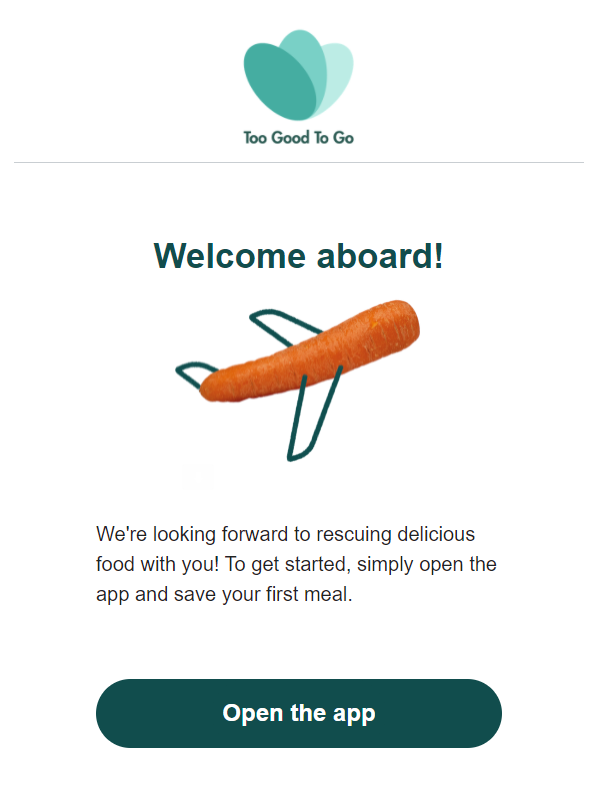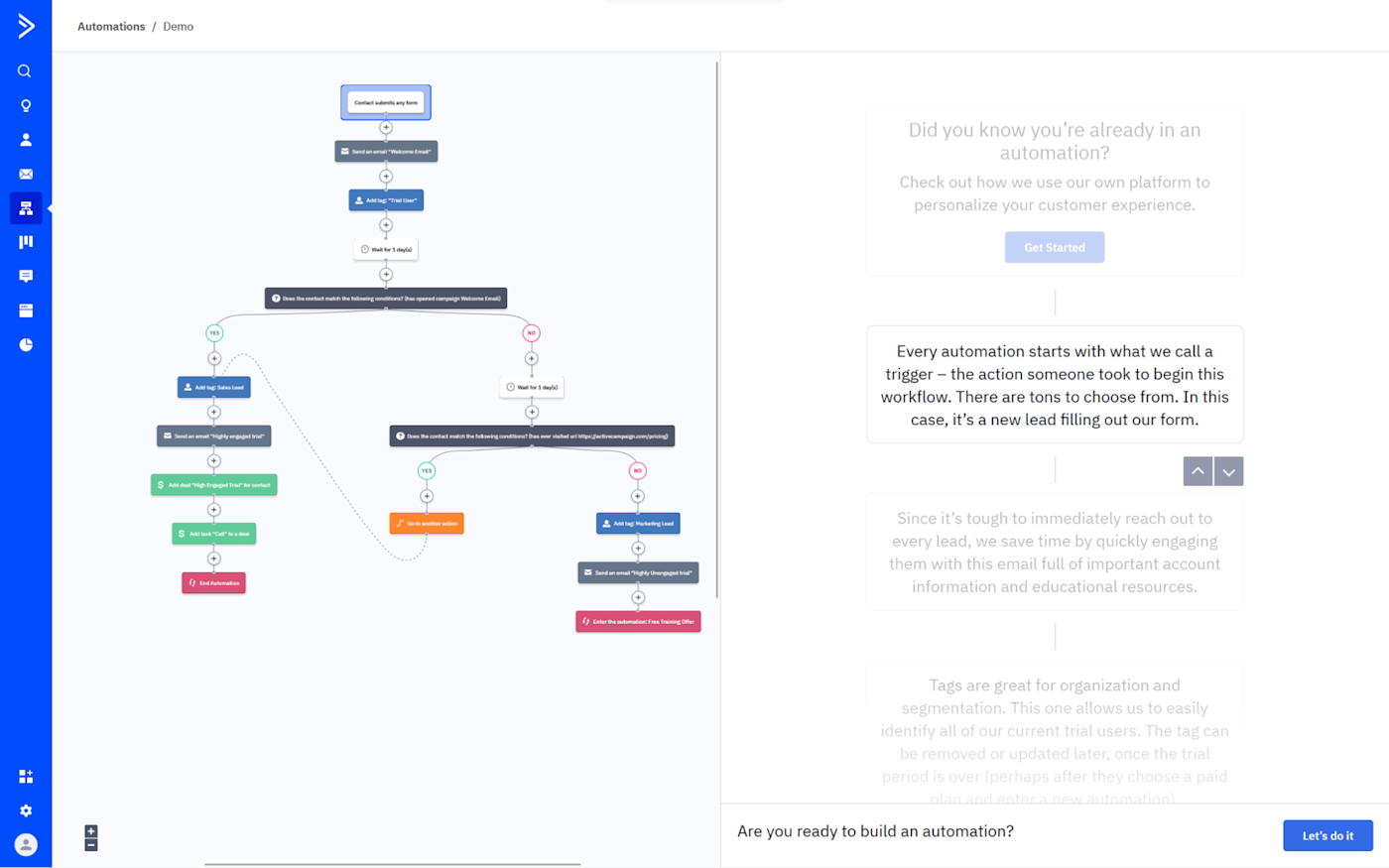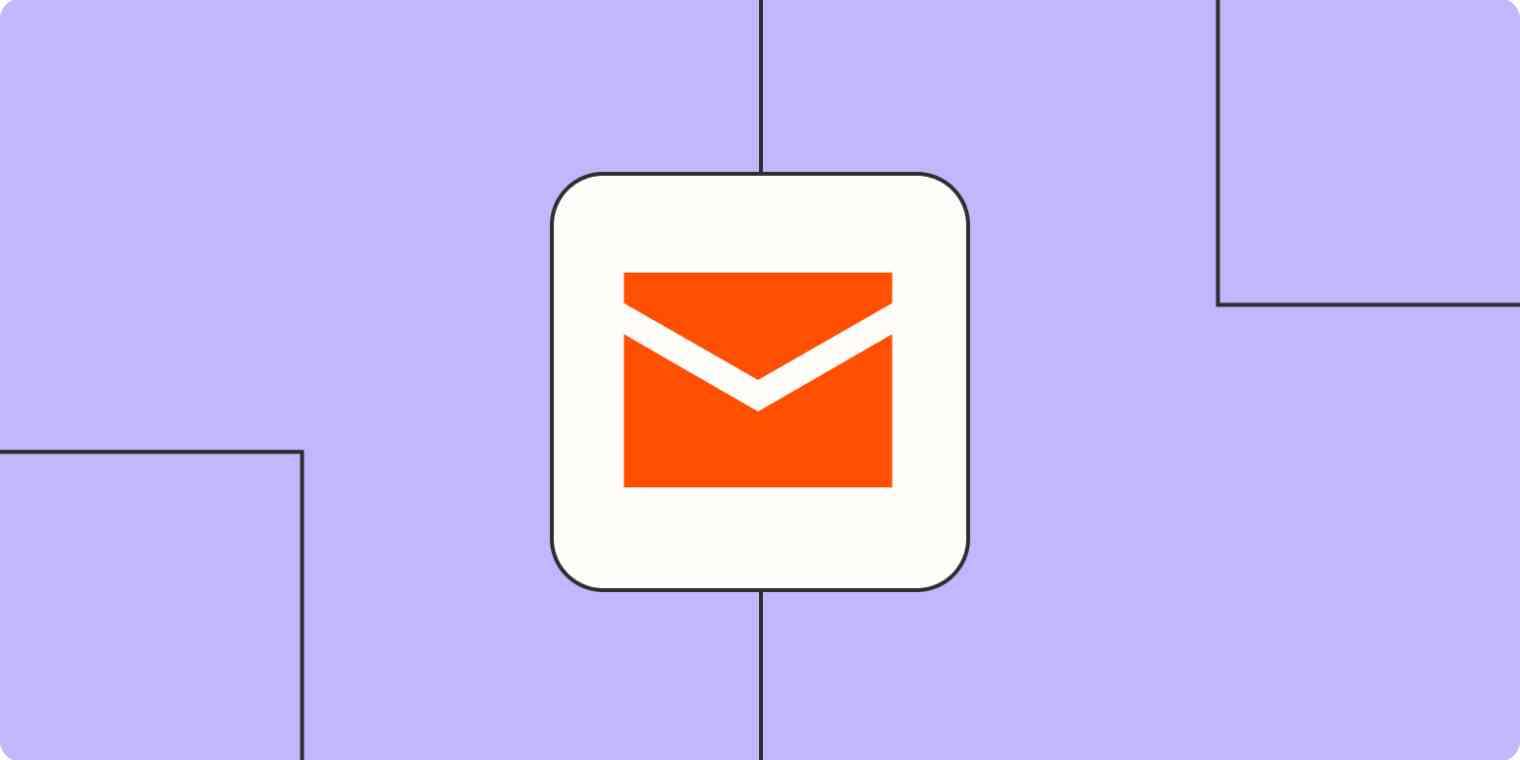When you're looking for an email marketing app for your business, one of the biggest perks of the market is the sheer volume of options. There's an app for every aspect of email marketing.
But that means you have seemingly unlimited options to sift through. It's overwhelming to look through a ton of email marketing analytics, doodads, and thingamajigs when you just want to send out a newsletter. Follow this process to pick an email marketing app that fits your needs—without the overwhelm.
1. Know what type of emails you want to send
The right email marketing app for your business will depend on the type of email you want to send. Which of these email types do you plan on using?
Transactional emails

Transactional emails are emails sent in response to a customer taking an action. Some common examples include purchase confirmations, shipping updates, and password resets.
Here's an example of a transactional email I got when I signed up for the app Too Good to Go. (Looks like a good opportunity to get cheap baked goods.) This one triggers when someone makes an account.

Zapier's picks for the best transactional email apps will get you started finding a good fit for your campaigns.
Drip campaigns

A drip email campaign is a series of emails sent at automatic intervals. Drip email marketing covers a wide range of strategies, but some of the most popular types of drip campaigns involve onboarding new customers, recommending products, and nurturing leads.
Spotify sends me this kind of drip campaign email at regular intervals to let me know about concerts near me from artists in my library. Franz Ferdinand is one of my favorite bands, so they nailed it.

Here are Zapier's picks for the best drip email marketing apps to add to your list.
Newsletters

Newsletter emails share regular news, updates, and topics of interest with their audience. Most businesses use newsletters to spread the word about product or content updates. Some also include original content related to their product or mission.
One of the newsletters I get in my inbox comes from a familiar brand—Zapier. The Zapier Monthly newsletter includes highlighted blog posts, popular Zaps, and job listings.

Zapier's picks for the best email newsletter apps will help you find options that could work for your newsletter.
A combination

Many businesses send more than one type of marketing email. If that's your situation, pay careful attention to an app's capabilities. For example, a newsletter-focused app might not have the automation features you need to create a drip campaign. Apps like Mailchimp, Sendinblue, and ConvertKit cover multiple email types. Or, if you want to broaden your horizons even further, you could try an omnichannel marketing tool like HubSpot or Iterable. But they might be overkill if you're only looking for email capabilities.
2. Determine your must-have features
Before you dig into any app descriptions, make a list of the features you must have to meet your email marketing goals. You might keep an eye out for features like:
A/B testing: A/B testing is the tactic of sending out two versions of an email with one different component and comparing their performance. If you focus heavily on email optimization, you'll want an app with A/B testing capabilities.
HTML editing: Some email apps let you edit an email's HTML directly, while others don't. You'll want to check for HTML editing if you plan on editing your emails' code.
Template variety: If you prefer to use templates to design your emails, you might want an app with a solid template library. You'll have more options to choose from when you need to create a new email layout or look.
Automation: Automation is an especially important feature for drip email creators, but it also applies to functions like audience segmentation. Make sure your chosen app automates repetitive tasks, either on its own or through Zapier.
Industry-specific features: Some email apps focus on one industry to provide specialized features. For example, since Drip is geared toward eCommerce email marketing, you can link it to specific products in your store. See if you find any apps with features tailored to your industry that could be a game-changer.
Email volume: Many apps scale their pricing based on the number of emails a customer sends out. If you have a large contact list or send emails often, make sure your app will scale with you at a price that works for your business.
Customer service: This isn't quite a feature, but it's still super important. If you value good customer service for your software, check a review site like G2 to see what people say about an app's customer support.
As you evaluate apps for their features, remember you can automate some functions between apps using Zapier. If an app missing one of your must-have features otherwise looks good, see if you can fill that gap with a Zap.
3. Build your testing team
If you have enough people in your organization, consider putting together a team to test potential email marketing software. That way, you'll get a better idea of how each app will work across your team.
Clutch recommends including these folks when you put together a testing team for your internal software:
People who will actually use the software once you add it to your stack. Here's how to know who should send emails for your company.
A member of your IT department who can track what kinds of system changes you'll need to start using an app.
Someone from your finance department who will approve the cost of the apps you're looking into.
4. Create a shortlist of apps
Create a shortlist of apps that can handle the types of emails you want to send and provides your must-have features. List each app name and add comments on features, perks, and benefits that stand out to you.
Taking the team approach? You can get everyone on your testing team's input with a simple spreadsheet. Put app names in one column, then add columns for each team member to write their comments.
To help build your shortlist, lean on other folks who've already done a lot of testing. If you do consult other lists, make sure they're written by real humans who've spent a lot of time with each of the apps they're writing about. Zapier has a number of lists that can help you get started.
5. Test each app with your team
Now it's time to get your hands dirty. Work with your team to try out the apps on your shortlist by following these steps for each app:
Create an email list that includes all of the members of your test team. Make a spreadsheet with everyone's email, first name, and last name for easy importing to each app.
Write a test email. Lorem ipsum will do the trick for your email's copy. Add images, embed video, and any other elements you'd like to include in your typical email.
Use your favorite screen recording software to show your testing team what the email drafting process looks like.
Once you finalize your test email, send it to everyone on your testing team. Check how the email looks on web and mobile formats.
After folks open your email, visit the email app's analytics section to see how it presents data.
As you test each app, make sure to click all the buttons. Don't be afraid to try interesting features and change settings to see what they do. While you explore an app's features, look out for integrations with other apps you use and test those out, too.
Depending on the type of emails you plan on sending, you might try out particular features over others. For example, if you want to send drip emails, you should spend a lot of time in an app's automation or sequence interface. Meanwhile, you might A/B test subject lines for a newsletter or pay attention to email delivery speed for transactional emails.
After you complete this process for every app on your shortlist, meet up with your testing team to review what you've discovered together.
6. Start with a free plan
It's totally fine to start with a free email tool if you aren't ready to commit to a paid plan. We evaluated the best free email marketing tools to get you started. Many of them scale into paid plans when you're ready to go deeper.
You can look into a paid option when you're ready to grow your email marketing efforts. After you work with an email marketing platform for a while, you'll have a better understanding of what paid features you want in your software. There's no better way to learn than doing.
Don't be afraid to switch
After you choose an email marketing app, always remember that your decision isn't set in stone. You can switch apps whenever your current choice doesn't serve the right purpose. A tool like Transfer by Zapier will make data transfer a snap.
This article was originally published in February 2015 by Matthew Guay. It was most recently updated in April 2022.





